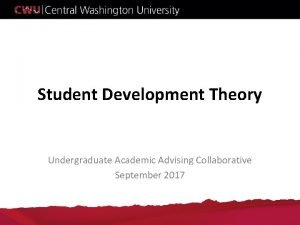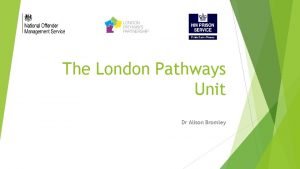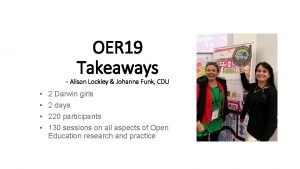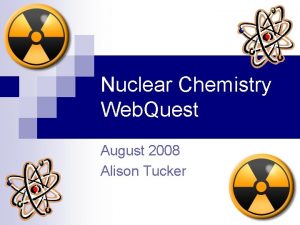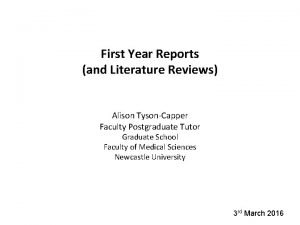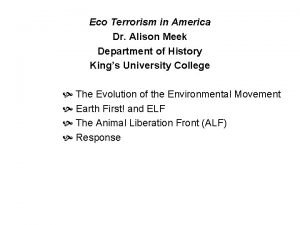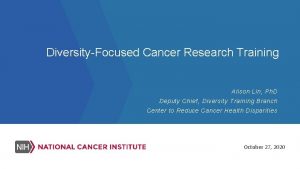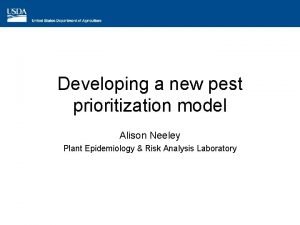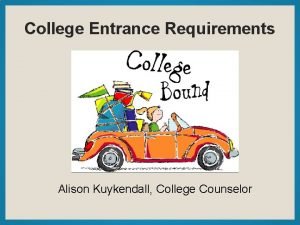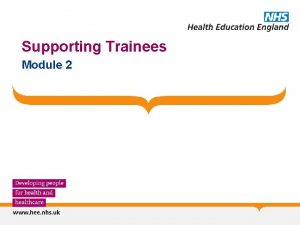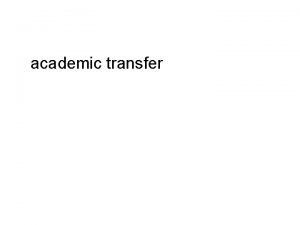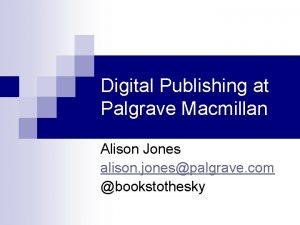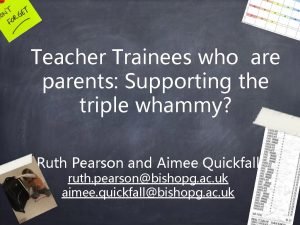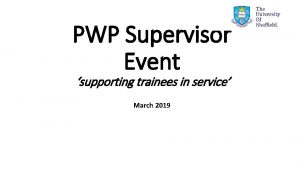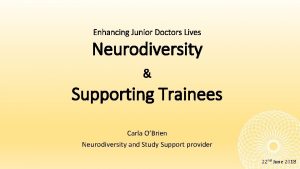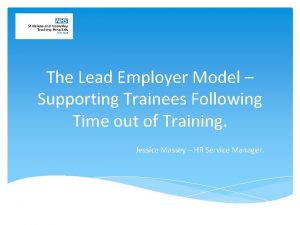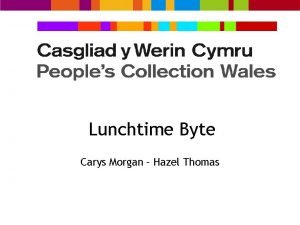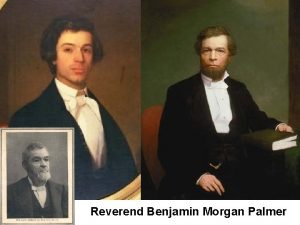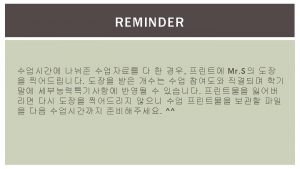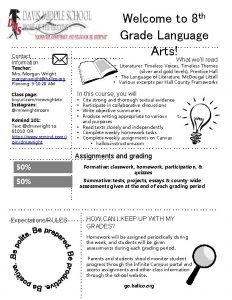Supporting your Trainees Academic Development Dr Alison Morgan



















- Slides: 19

Supporting your Trainee’s Academic Development Dr Alison Morgan Deputy Head of Secondary PGCE

PGCE Route Map 2017 -18

PG Assessment Structure “Subject Studies” EP 929 30 CATS (7) “Reflective Practice” IE 9 J 1 30 CATS (7) “Professional Practice” EP 918 30 CATS (6) PG 1 PG 2 PDP Honours Level Qualification PGCE with QTS PCE with QTS PGCert Ed Studies

Module PG 1: Subject Studies PG 1 a Essay – 1500 words PG 1 b Essay – 4000 words PG 1 c Academic Poster (80%) Deadline: (formative) Deadline: 3 rd September 2017 for SD 24 th September for Core 7 th January 2018 (20%) Deadline: 3 rd June 2017 (Presented during viva)

Module Breakdown – PG 1 All postgraduate work is marked out of 100 against M-level marking criteria PG 1 a 1500 word essay examining cognitive development and theories of learning, as applied to a subject specialism. NOT for credit – feedback only, intended to help identify specific needs regarding M-level study. NB. Writing for Social Sciences is different to other disciplines so we strongly encourage everyone to attempt this work.

Module Breakdown – PG 1 ALL ASSESSED ELEMENTS OF THE MODULE MUST BE PASSED PG 1 b PG 1 c 4000 word essay examining an educational issue related to subject or the teaching of subject. (80%) Academic poster examining an aspect of teaching, as applied to the subject specialism. To be presented during the viva. (20%)

PG 1 b Titles • • • How does gender setting in PE affect participation and behaviour? Does Drama result in inclusion or isolation for SEN students? How does the new GCSE English disadvantage students with autism? Should Drama have its own National Curriculum? An evaluation of the strengths and weaknesses of the recent changes to assessment of practical science at GCSE. The value of mixed-ability teaching in English The implications of the new curriculum on the teaching and learning of Geography To what extent is “cultural capital” a barrier to studying History in Secondary Schools for white working class students? The decline in languages in UK schools does not help equip our young people for a future in the globalised world. What can be done? Is Religious Education still relevant in Modern Britain? The barriers to learning mathematics and overcoming the fear of numbers Investigating the low uptake of Science by female students in post-compulsory education

Bloom’s Taxonomy as a Method for Developing Critical Thinking and Independent Learning C. L. Davison Student Number: 1523171 6. Create 1. Remember Bloom’s Taxonomy was created in 1956 with the intention of supporting teachers to classify the ‘intended behaviour of students. ’ (Bloom 1956, p. 12) and as a way of monitoring or ‘obtaining evidence on the extent to which the desired and intended behaviours have be learned by the student. ’ (Bloom 1956, p. 13). In 2001 Bloom’s Taxonomy was revised, changing the original noun form into verbs and swapping the top two levels so that ‘Creating’ previously known as ‘Synthesis’ is now at the top level. (Stobaugh, 2013) Johnson and Johnson (1999) explore what constitutes cooperative learning and how it can be successful. They identify five elements of cooperative learning: Ø Positive interdependence Ø Individual accountability In order to ensure the success of developing critical thinking skills the students need a Ø Face to face promotive interaction greater focus on individual accountability and group processing in their cooperative Ø Social skills learning. Students should evaluate the effectiveness of their group and be expected to Ø Group processing demonstrate their own development of skills. By synthesizing Johnsons and Johnsons’ research on cooperative learning with the resources created based on Bloom’s Taxonomy, some of the previously faced difficulties could be mitigated creating an environment promoting critical thinking and learning. 2. Understand After initial research, understanding as to how Bloom’s Taxonomy could be used in the targeted setting was required. In September 2015 the schools introduced a sixth form and there has been agreement and frustration across subjects that the students are ill prepared for A-level education as, up until that point very little independent learning and thinking has been required of them. Stobaugh (2013) explains that ‘increasing the level of criticalthinking skills in any program raises the level of rigor’(p. 5)and this is where Bloom’s taxonomy can come into play in the classroom. It can be used: Ø As a tool to support critical thinking Ø To track progression Ø Examine the level of thinking and questioning in a classroom. Each card relates to each of the levels of learning on the revised version of Bloom’s Taxonomy Apply 3. Apply How would you show your With this in mind, two resources were created to “I can” statement on understanding of…. . ? implement critical thinking, based on theory of the front of each card Key Words What examples can you find to Bloom’s Taxonomy, in the classroom. The first was the supports students in show…. . ? ‘lesson journey. ’ The teacher is able to use this to understanding what Administer Examine Illustrate How would you use what you reflect on their own lesson during the planning process, each level of the Apply Interpret have learned to develop…. . ? to ensure that they are providing a activities that Taxonomy, and Associate Interview challenge the pupils and move their thinking forward. It consequently their Connect What questions would you ask Plan is also used as a way to encouraging the pupils to learning, involves. Construct in an interview with…. . ? Solve become more aware of their learning. They can track Correlate Could this have happened in Teach their own progress and their learning journey through Develop …. . ? Use the lesson, becoming aware that they have mastered a Dramatise What would happen if …. . ? · skill if they are able to complete the evaluation activity at the end of the lesson. The second resource created was a pack of six double Back Front sided Bloom’s questioning cards. The card used should link to the lesson journey, reinforcing students’ self awareness of their learning process. References: Perhaps the clearest problem encountered was that the use of the cards involved a large amount of group work, creating questions to pose to each other. As in inevitable in a group work situation, there were occasions where not all students were on task and consequently not engaging in developing their critical thinking skills. Lesson Journey Apply I can use my knowledge in new situations. 5. Evaluate The sentence starters alone are not enough to ensure high level questioning; this must be coupled with regular teacher reinforcement about what is meant by the term ‘analyse’ or ‘evaluate. ’ It is also necessary to bear in mind that critical questioning is a skill that develops over time which can be supported by resources and modelled by teachers but it cannot be taught. What went well: Students were able to identify, even after the first week of using the resources, which card they thought they should be using, and consequently at which point in their learning journey they were. Problems encountered: Key words on the front of the card and the question starters on the back of the card support students in developing their critical thinking skills. Bloom’s Taxonomy is an excellent way of tracking students’ learning, developing their critical thinking skills and creating selfaware learners, but this can only be accomplished if students are fully engaged in the lesson activities and therefore the learning process. 4. Analyse The Lesson Journey and Question Cards were trialled with a year 8 set 4 (of 5) class containing 22 students over a series of four lessons in which they were studying a Shakespeare play. The cards were used to support a variety of questioning activities. Ø Students found it easy to create low level ‘Remember’ questions to test their partner as a lesson starter. Ø Very successful in using their cards to create higher level analysis questions in a hot-seating activity to examine character in the play. Ø Many students struggled to create analysis questions based on an extract from a scene and, on occasion, were using the sentence starters on the ‘Analyse’ card but still creating low level ‘Understand’ or ‘Remember’ questions. Bloom, B. , et al. , ed. (1956). Taxonomy of Educational Objectives: The Classification of Educational Goals. New York: David Mc. Kay Company, Inc. Johnson, D. , Johnson, R. (1999). Making Cooperative Learning Work. [Online]. (URL http: //0 -eds. b. ebscohost. com. pugwash. lib. warwick. ac. uk/eds/pdfviewer? sid=763 bf 7 c 4 -064 d-4 b 90 -91 aa b 4 be 5 b 6 a 2 c 7%40 sessionmgr 114&vid=1&hid=127). Theory Into Practice, 38(2). (Accessed on 28 November 2015) Stobaugh, R. (2013). Assessing Critical Thinking in Middle and High Schools: Meeting the Common Core. New York: Routledge.

Module PG 2: Reflective Practice PG 2 Essay – 5000 words (100%) Deadline: 15 th April 2018

Module Breakdown – PG 2 ALL ASSESSED ELEMENTS OF THE MODULE MUST BE PASSED PG 2 5000 word essay examining one of the Teachers’ Standards in detail, with reference to theory, policy and practice. There is a comparative aspect to this assignment, contrasting the chosen standard across both placements and reflecting on trainee’s own development. (100%)

PG 2 Titles • Critical Reflections on… – differentiation in secondary schools and how it affects gifted and talented students – the Effective use of Feedback in the Classroom – in-school summative assessment and life after levels – the Use of Mobile Phones in the Classroom – establishing High Expectations: how to inspire, motivate and challenge pup – to what extent Behaviour for Learning is more effective than the Reward and Sanction System at School – how ICT is used within a classroom to bring about effective learning

PGCE Classification Calculated from the mean average mark across modules PG 1 and PG 2 70+ % Distinction 60+ % Merit 50+ % Pass < 50 % Fail at M-level (may pass at H-level)

Resubmission • One chance to resubmit each piece of failed work at M-level • Tutorial / intervention support to work through feedback • Pass second time around is capped at 50% • Failure second time will be reconsidered at H-level • Work is not “officially” failed until Exam Board, from then trainees have one year to resubmit (note: possible delay to QTS)

Master’s Marking Criteria Comprehension Analysis Critique Presentation Grade A*/A (Mark of 80 or above = A*; 70 -79 = A) A wide range of relevant sources, which are well understood, are skilfully and concisely deployed to support arguments. B (Mark of 60 - 69) Sound and thorough grasp of relevant concepts, theories and/or research methodologies which are wellsummarised. Demonstrates a highly developed understanding of relevant concepts, theories and/or research methodologies. The work is supported by references to a good range of relevant sources which are used in a relevant way. Recognises the demands of the question providing a wellfocused, relevant answer. Skilful evaluation which synthesises both the literature and personal perspectives in response to the question. Material is very well-organised and the structure complements the content. Sets sources and viewpoints in a wide context and makes a comprehensive assessment of issues involved. Demonstrates a balanced critical understanding of the issues. A high level of written communication with very few errors of spelling, grammar and syntax. High levels of ability to analyse, identify relevant issues, synthesise and apply knowledge and concepts. Some originality of thought and creativity. Points are comprehensively and appropriately substantiated. Displays critical awareness of methodological and theoretical considerations. Mastery of referencing conventions with very few errors or omissions. Recognises the demands of the question providing a focused, relevant answer. Perceptive commentary on evidence and materials used in response to the question. Well-structured work displaying attention to the logic and development of the piece. Sets sources and viewpoints in context. Able to make appropriate critical points. A clear written style. Spelling, grammar and syntax are generally good. A good ability to analyse, identifying useful points synthesise and apply knowledge and concepts. Displays awareness of methodological and theoretical considerations. Points are consistently and appropriately substantiated. Relevant theories/theoretical models are applied to deepen understanding of the links between theory and practice. Application of theories/theoretical models in a relevant way to answer to the question. Most features of the referencing system are used correctly. C (Mark of 50 - 59) Pass Mark 50 An adequate range of relevant source materials is used. The response to the question addresses basic requirements and there may be some irrelevant material. Sensible commentary on evidence and materials used throughout, in response to the question. A generally satisfactory overall structure although it may lack balance in parts or fail to integrate some material. Understanding of main concepts, theories and/or research methodologies is fair but lacks depth and/or breadth. There may be some gaps or areas of confusion. The attempt at analysis, synthesis and application of knowledge and concepts is competent but lacks depth and breadth. Limited critical reflection. An adequate written style which is not impaired by the occasional errors of spelling, grammar and/or syntax. D (Mark of 40 – 49) Some evidence of relevant reading. Introduction of basic concepts and effort made to relate them to the demands of the question which have been only partially understood, leading to irrelevant material. Understanding of the subject matter is limited. The work displays major gaps in knowledge, serious misconceptions and/or factual inaccuracies. Generally appropriately substantiated. Limited use and understanding of theoretical models. The recommended referencing system is used but with some errors and omissions. Some sensible comment is made. Weak structure. Uncritical commentary. Expression of ideas is sometimes confused or unclear. Communication may also be impaired by errors of spelling, grammar and/or syntax. No sustained analysis, mainly descriptive with and an inability to apply knowledge and synthesise material. Lacking appropriate substantiation. Referencing marred by frequent errors and omissions. Very limited reference to theoretical models. E (Mark below 40) Few relevant sources used. Serious gaps and/or errors in knowledge and understanding. The question may have been ignored or badly misunderstood, and there is much irrelevance. The commentary may not be seen as sensible in relation to the question. Unstructured presentation, lacking coherence. Superficial treatment of the topic much of which is descriptive. Expression of ideas is poor and may also be impaired by frequent errors of spelling, grammar and/or syntax. Lacks appropriate critical or theoretical framework. Much of the writing is unsubstantiated. The recommended referencing system has not been mastered.

Areas of Development for Trainees • • Essay writing – social sciences Academic writing Accurate writing Essay structure Critical analysis Constructing an argument Harvard referencing

University Support • • Lead lectures Detailed brief for each assignment Online resources Workshops 1 -1 Tutorials Library sessions Student Services

School Support • Discuss essay plans in mentor meetings • Provide resources – school policies, data, etc • Subject specific resources – journal articles, CPD materials, websites • Support with time management – time and space to study • Mock poster presentation • Proof reading!

How can we support you to support them?

Thank you Any questions?
 Student development theory
Student development theory Give us your hungry your tired your poor
Give us your hungry your tired your poor Cay ryan murray wikipedia
Cay ryan murray wikipedia Alison voice leeds
Alison voice leeds Alison bromley
Alison bromley Alison is jogging on a circular track
Alison is jogging on a circular track Real life superheroes book by alison
Real life superheroes book by alison Alison crane
Alison crane Dr alison giles
Dr alison giles Oer
Oer Dr alison tucker
Dr alison tucker Alison bourke
Alison bourke Alison tyson xxx
Alison tyson xxx Alison meek
Alison meek Alison lin nih
Alison lin nih Pest control alison
Pest control alison Alison kuykendall
Alison kuykendall Dr alison landrey
Dr alison landrey Alison hemphill
Alison hemphill Alison ernst
Alison ernst
